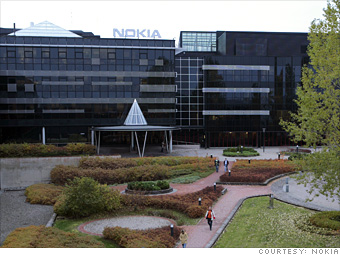
The Rise: Though the Finnish phonemaker's roots arguably trace back as far as the early 20th century, when it dealt mainly in rubber products, Nokia as consumers know it today didn't really hit its stride until the early 1990s, when it gradually sold off its rubber, cable and consumer tech divisions and focused exclusively on mobile telecomm. Once it did, the company took off -- by 1998, Nokia was the world's largest mobile manufacturer.
The Fall: While it's still technically the largest mobile phone manufacturer with a 31% market share as of fourth quarter 2010, that market share has been on the decline, due in no small part to the introduction of the iPhone and Android devices sporting operating systems with better user interfaces than the company's own (creaky) Symbian OS and the stalled high-end MeeGo platform, a merger of Intel's Moblin and Nokia's Maemo projects, which has yet to find its way into many devices.
The Plan: Use Microsoft's recently-introduced Windows Phone 7 operating system as the primary platform for Nokia devices moving forward. According to company CEO Stephen Elop, recruited from Microsoft as the company's first non-Finnish CEO, WP7-loaded phones could find their way to market later this year.
The Challenge: Competing with entrenched champs like iOS and Android, not to mention getting consumers, particularly in the U.S., excited about a company that hasn't had a hit product in years using a fledgling OS that still lacks basic features like copy/paste and true multitasking.
NEXT: Digg
